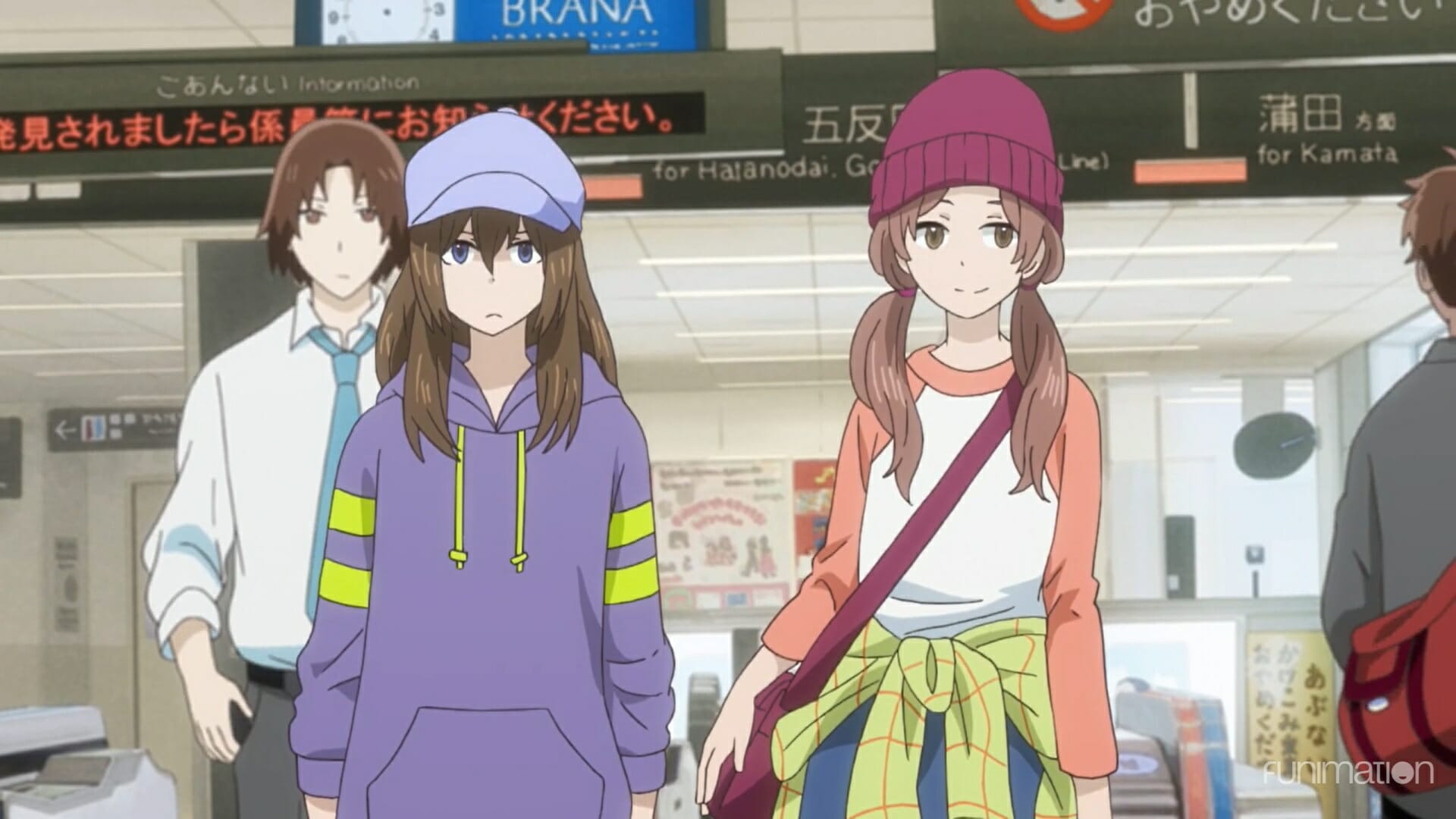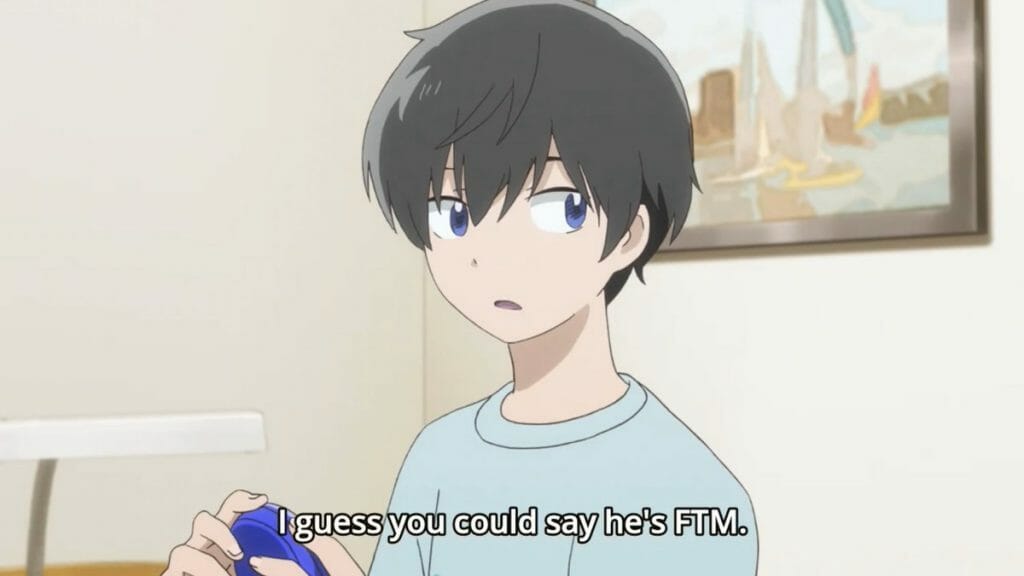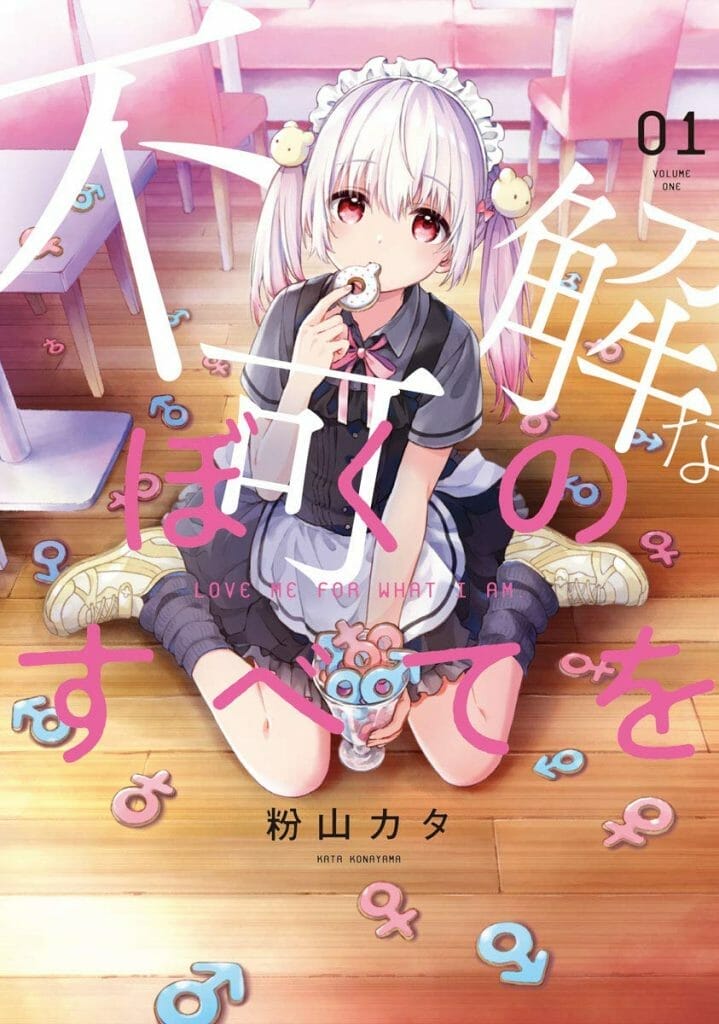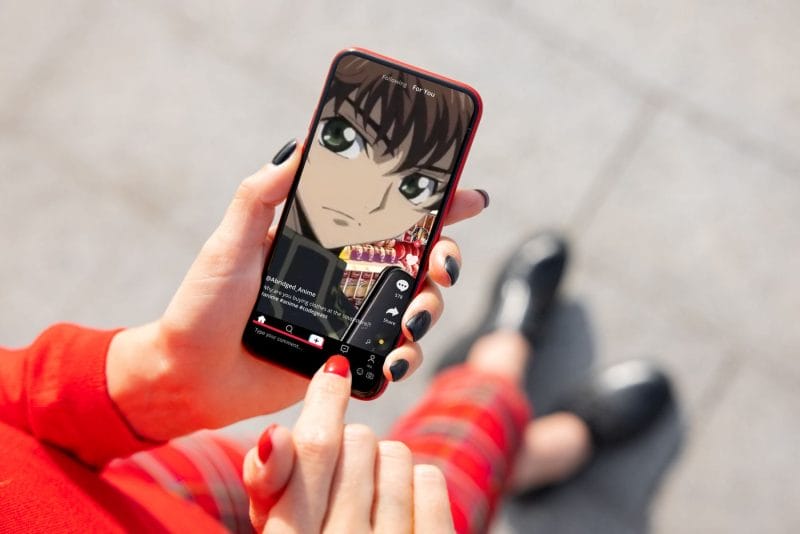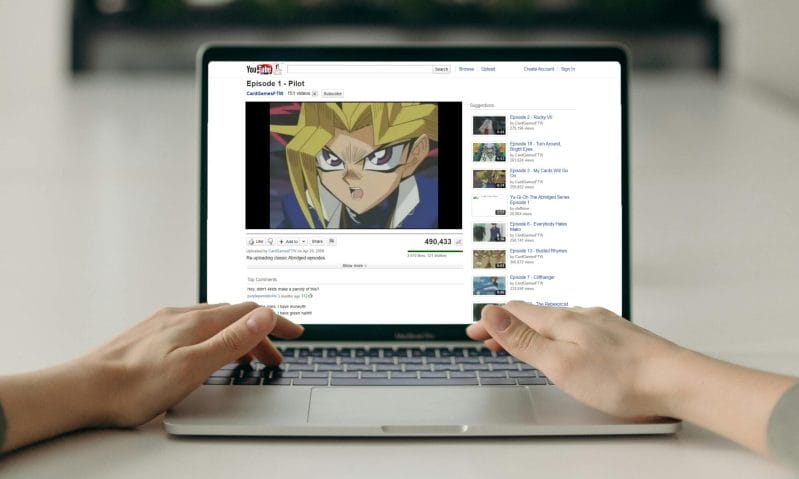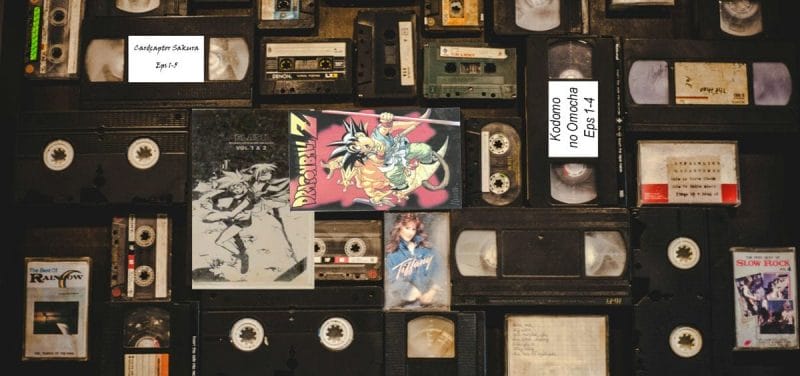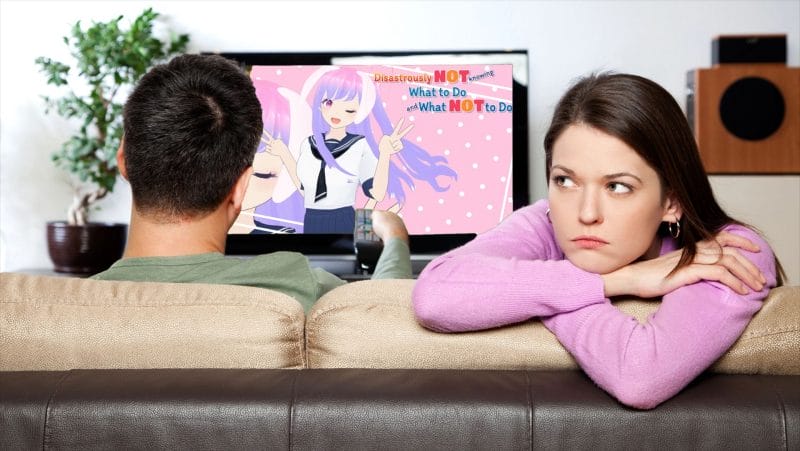In the eighth episode of 2019’s Stars Align, Maki and Yuu — a star player and manager of a soft tennis team, respectively — are encouraged by the rest of their club to crossdress so that they can sneak into a crowd of female fans surrounding an upcoming rival’s practice sessions. As a classic plot beat in anime which has appeared in shows from Pokemon to Mob Psycho 100, most viewers likely had a predisposition of what to expect. In the average series, they’d show up to watch their opponent, appear comically out-of-place among the girls, and the plot would move on. Stars Align never takes that path, though, and declines to make any jokes which would frame the pair as perverse or unnatural because of their crossdressing. Instead, Yuu admits to an already-present interest in bending gender norms, for a reason anime had never dived into so explicitly: they’re non-binary. Maki accepts this, describing how his mother’s best friend is a trans man in an attempt to reassure Yuu.
The explicit use of the term “non-binary” in Stars Align — more accurately, “x-gender,” its Japanese equivalent of sorts — is a landmark step when it comes to the portrayal of specific subsets of queerness in anime. Even so, it’s neither alone nor the first example of such an occurrence. Throughout the last sixty years, anime and its sister media have been a complex space for queer fans and creators. Same-sex relationships and gender deviancy are portrayed in anime more often than is socially acceptable in real life, offering an important space for inspiration and discovery. Sadly, queerness has also been used to convey homophobic and transphobic jokes and narratives, often in the same series which present strong queer characters.

Anime’s complicated relationship with queerness extends as far back as the medium’s godfather, Osamu Tezuka. In his work Princess Knight, lead character Sapphire simultaneously has the heart of both a boy and a girl, allowing her to participate in combat, while also being determined to eventually get married and act like a normal princess. This combination of norm-breaking and norm-maintaining would continue in The Rose of Versailles, in which French aristocrat Oscar is raised as a boy but comes to rue that fact. The 1980s introduced fans to Stop!! Hibari-kun!, where trans girl Hibari’s gender is presented as both an important aspect of who she is, and as a cause for alarm for the male main character, among others. All these portrayals demonstrate the possibility of moving beyond the gender role and identity that one is assigned at birth, yet they’re ultimately always tragic or comic, and often maintain unhelpful stereotypes, which lands them in a space that can’t be seen as straightforwardly positive.
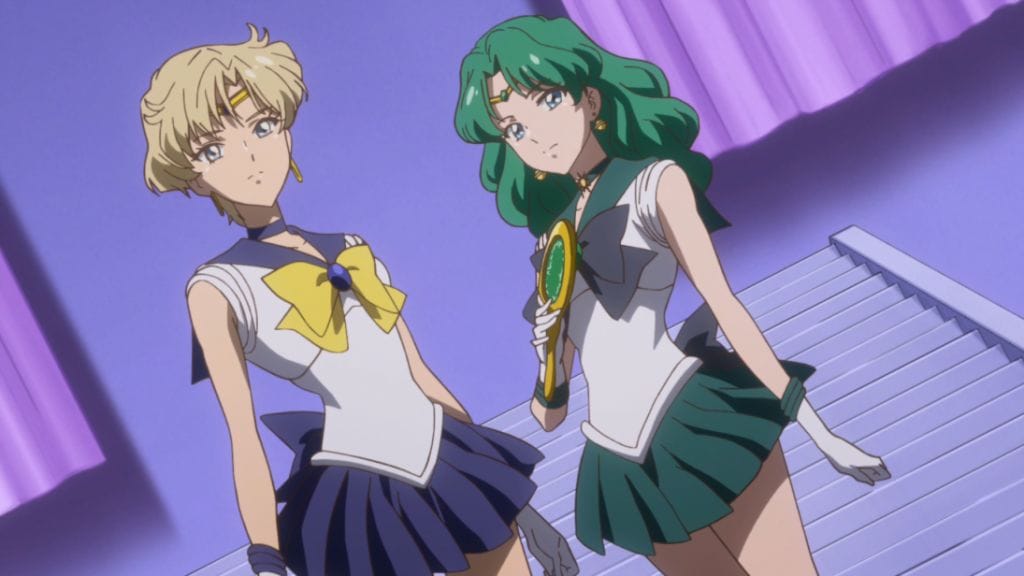
By the ‘90s, as anime and manga expanded, so too did their portrayals of queerness. Sailor Moon’s anime never shows a kiss between Uranus and Neptune, but their presence was important to many nonetheless. Alongside the villainous queer characters in the show, Sailor Moon’s portrayals are consistently respectable, even if the characters themselves are not always good people.
Shortly after Sailor Moon came other anime, like Revolutionary Girl Utena, which more directly challenges normative ideas around gender and sex, concluding that binding yourself to those stereotypes can only be harmful. Over time, other positive changes can be seen within the medium, as well as those surrounding it. For example, Yoshihiro Togashi — husband of Sailor Moon creator Naoko Takeuchi — portrays a trans woman being violently outed in his Yu Yu Hakusho manga and anime, declaring that she can’t go “halfway.” By the time he began work on Hunter x Hunter in 1998, however, his tune had clearly changed, as shown by main character Killua’s insistence that others respect the fact that his trans sister Alluka is a girl.
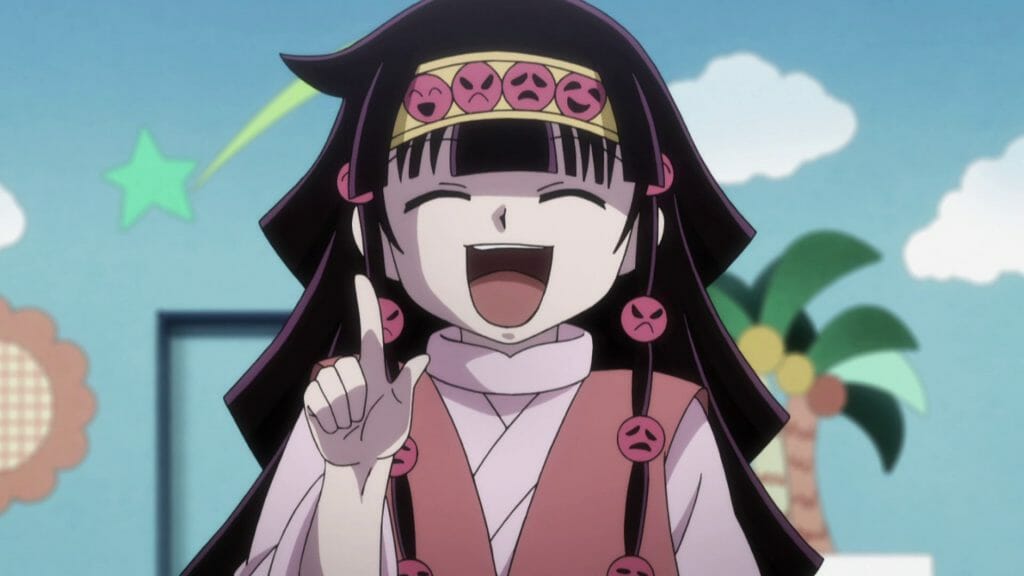
Despite these positive advancements, though, the overall situation regarding representation remained spotty and imperfect. Cardcaptor Sakura, for instance, presents multiple queer characters. But, in some cases, like that of the young boy Syaoran, the feelings are given a supernatural cause, which makes them easy to dismiss as non-genuine.
Eiichiro Oda’s One Piece proves to be even more problematic on this front, presenting a number of “okama” characters over the course of its narrative. The word okama, itself, is a slur that’s typically used to describe feminine gay men and trans women, though it’s occasionally used even more broadly. The stereotype typically portrays individuals who are strong and often kind-hearted, yet comically masculine in spite of their attempts at femininity, best seen in the stubble which adorns their faces.
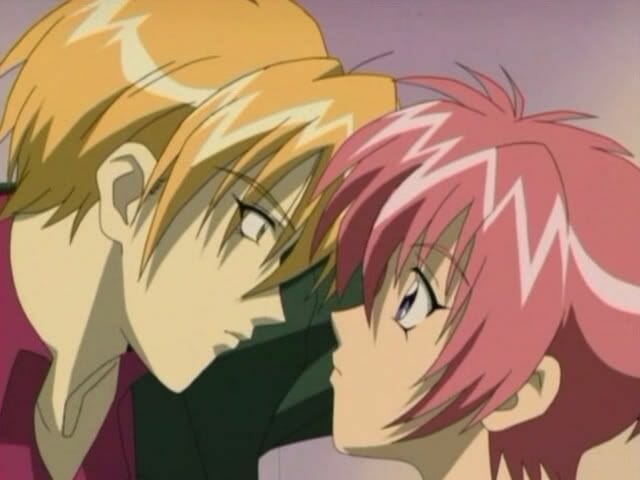
By the 2000s, boys’ love (BL, henceforth) and yuri manga had made a sustained leap to anime, changing the landscape once more. Works like Gravitation and Kannazuki no Miko are rarely regarded as masterpieces, and indeed are oft-derided as fetishitic and detached from the reality of queer experience. Nonetheless, shows as explicit in their queerness as that were rare at best in preceding decades, so their presence marked a meaningful increase.
While BL and yuri manga have historically offered a wide variety of stories, the titles that anime producers typically chose to adapt tended to focus on more salacious details. Nonetheless, these shows paved the way for more grounded works like Sweet Blue Flowers (Aoi Hana), No.6, and Wandering Son, all of which portrayed different aspects of queer life without the problematic material that many viewers disliked in earlier works.
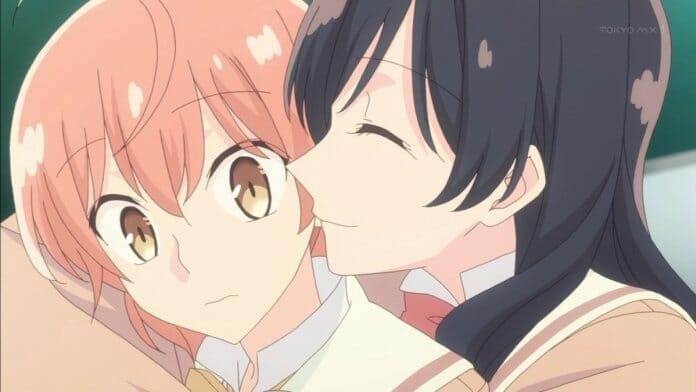
By the 2010s, queer works had begun to gain steam in the anime world. Their popularity steadily grew throughout the decade, with particularly Herculean steps being taken in the last few years, especially. Yuri anime like Bloom into You have found a warm reception, even in the greater anime subculture, and stronger sales have generally accompanied that. Yuri!!! on Ice, meanwhile, became a veritable phenomenon. BL anime like Given and Doukyuusei, which avoid the romanticized sexual assault and harmful stereotypes that were omnipresent in earlier adaptations of the genre, now receive semi-frequent adaptations, a testament to the increasing importance of strong queer stories all around.

In 2018, idol anime Zombie Land Saga introduced a trans girl, to relatively widespread acclaim, and as with recent gay characters, she’s treated quite seriously. The character, Lily Hoshikawa, was quickly embraced by the queer fan community, and even earned a nomination for “Best Girl” at Crunchyroll’s 2019 Anime Awards. Her unflappable smile became a rallying cry, and through the strange vehicle for transformation that is memes, she even made her way to the Scottish Parliament!
While individuals may quibble over the handling of this or that character in this or that show, one thing is clear: queer anime are thriving now, relative to where they’ve been in previous decades. Furthermore, explicit, textual representation which doesn’t end in laughs or death is no longer a rarity. Not only does this situation make it easier for those who might discover themselves through anime, it also opens up the floor for more complex portrayals of queerness that go beyond the basics. When we have more queer heroes, it’s less upsetting to see queer villains.
While it’s not part of the same field field per se, queer manga demonstrates these same changes. Yuhki Kamatani’s Our Dreams at Dusk depicts characters from across the gender and sexuality spectrums, from trans, to lesbian, to asexual, as a small-town queer community strives to make a space for itself in spite of the very real oppression all of its members face. In Kata Konayama’s (upcoming in English) Love Me For What I Am, the non-binary main character works at a cafe, which is also staffed by trans women and gay men. In the series, educational moments are blended in near-seamlessly with a coming-of-age drama, which elaborates on our similarities and differences from one another while centering the ultimate need to stay united. It’s not a coincidence that these works, and others like My Lesbian Experience with Loneliness and My Brother’s Husband came out at roughly the same time as Given, Zombie Land Saga, Stars Align, and Bloom into You. They all build off one another and the groundwork lain by decades of queer content that, spotty as it’s been, has made what’s happening now possible.
Of course, this doesn’t excuse poor portrayals in the past and present, alike. Indeed, many of the problems with older works continue to surface in shows that are released today. Mob Psycho 100’s crossdressing gag came out in 2016, and airing in the same season as Stars Align was Case File nº221: Kabukicho, which handles okama stereotypes no better than One Piece did more than a decade prior.
Yet, at a time where things are improving for LGBTQIA+ individuals in Japan, these portrayals feel increasingly out-of-touch. They’re occurring against the backdrop of major LGBTQ movements within the nation, including gender neutral uniforms, same-sex marriage, and workplace protections. In this light, it’s difficult to feel dissatisfied once one takes stock of how anime has historically handled queerness, though it’s only reasonable to keep pushing forward.
In Japan, as in the rest of the world, queer struggle continues, and art is going to keep portraying that. That’s likely why Stars Align’s depiction of Yuu struck such a chord with fans both queer and otherwise; it shows an active, up-to-date understanding of the issues we face, and aims to both educate the viewer on those issues and tie them into a satisfying character arc. Yuu’s story may not be complete, but it’s done its most important task. And with that, other anime will continue to take up the cause, standing on its shoulders just as it stood on Wandering Son and Wandering Son stood on Hibari-kun.


